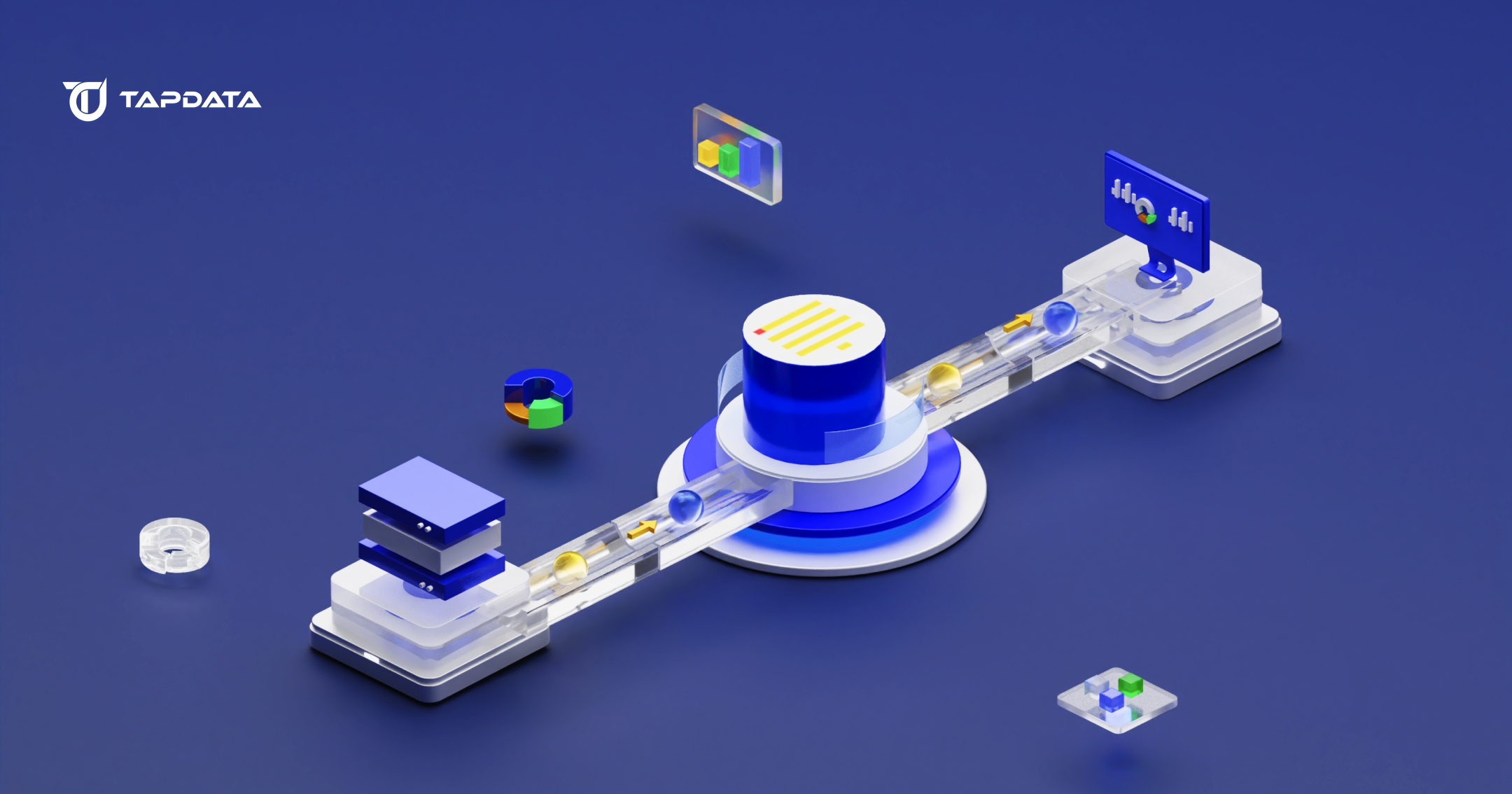Change data capture empowers you to track and manage incremental changes in your data sources. It ensures
real-time replication, enabling swift data transfer without delays. Unlike
traditional ETL processes, CDC focuses on agility, making it a cornerstone for modern data-driven strategies. By adopting CDC, you gain a
competitive edge, as it supports real-time analytics and decision-making. This approach not only enhances synchronization but also ensures
data consistency, which is vital for accurate insights. As businesses increasingly rely on real-time data, mastering CDC becomes essential for staying ahead in today’s fast-paced environment.
Key Takeaways
-
Change Data Capture (CDC) allows for real-time tracking of data changes, enhancing data synchronization and ensuring accuracy across systems.
-
Implementing CDC can significantly improve performance by reducing the load on operational databases, allowing for efficient real-time analytics.
-
Choosing the right CDC method—log-based, trigger-based, or timestamp-based—depends on your specific operational needs and data volume.
-
Regular monitoring and testing of your CDC implementation are crucial for maintaining data integrity and performance, especially under high transaction loads.
-
Utilizing CDC tools like Debezium or TapData can streamline the setup process and provide robust features for data replication.
-
Prioritize data consistency and compliance by implementing strong conflict resolution strategies and maintaining detailed audit trails.
-
Investing in CDC not only enhances operational efficiency but also positions your organization to leverage real-time insights for better decision-making.
What is Change Data Capture and Why is it Important?
Definition and purpose of change data capture
Change Data Capture (CDC) refers to a method that identifies and
Change Data Capture made to data in a database. Instead of processing entire datasets, CDC focuses on capturing only the incremental changes. This approach ensures that you can replicate, synchronize, or analyze data in real time without unnecessary overhead. By implementing CDC, you gain the ability to monitor updates, deletions, and insertions in your data sources. This makes it an essential tool for maintaining data consistency and integrity across systems.
CDC serves as a bridge between operational databases and analytical systems. It allows you to transfer updated information seamlessly, ensuring that your data-driven applications always operate with the most current data. Whether you are managing large-scale data warehouses or enabling real-time analytics, CDC provides the foundation for efficient and reliable data management.
The role of CDC in modern database replication
In today’s fast-paced digital landscape, database replication plays a critical role in ensuring data availability and reliability. CDC enhances this process by enabling
real-time replication of changes from source databases to target systems. Unlike traditional batch processing methods, CDC minimizes latency, ensuring that your replicated data remains up-to-date.
For modern businesses, CDC supports critical operations such as cross-region database replication and disaster recovery. By capturing changes as they occur, CDC ensures that your systems remain synchronized, even in complex environments. This capability is particularly valuable for organizations that rely on distributed databases or cloud-based architectures. With CDC, you can achieve seamless replication while maintaining high levels of performance and accuracy.
Key benefits of CDC for real-time data synchronization and analytics
CDC offers several advantages that make it indispensable for real-time data synchronization and analytics:
-
Real-time insights: By capturing changes as they happen, CDC enables you to perform analytics on the most current data. This empowers you to make informed decisions quickly and effectively.
-
Improved performance: CDC reduces the load on your operational databases by focusing on incremental changes instead of querying entire datasets. This ensures that your systems remain responsive and efficient.
-
Enhanced data consistency: With CDC, you can maintain consistency between your source and target systems. This is crucial for ensuring the accuracy of your analytics and reporting.
-
Scalability: CDC supports large-scale data replication, making it suitable for growing businesses with increasing data demands. Whether you are managing on-premises databases or cloud-based systems, CDC adapts to your needs.
-
Compliance and auditing: CDC helps you track and record changes, which is essential for meeting regulatory requirements and maintaining audit trails.
By leveraging CDC, you can unlock the full potential of your data. It not only streamlines replication but also enhances your ability to derive actionable insights from your information. As businesses continue to prioritize real-time analytics, CDC remains a vital component of modern data strategies.
Methods of Implementing Change Data Capture
Change data capture can be implemented using various methods, each tailored to specific needs and system requirements. Understanding these methods helps you choose the most effective approach for your database environment.
Log-based CDC
Log-based CDC
monitors database transaction logs to capture changes. These logs record every operation performed on the database, such as inserts, updates, and deletions. By reading these logs, you can identify and
replicate changes without directly querying the database tables.
Example: Many modern CDC tools, like Debezium and AWS DMS, rely on log-based CDC to deliver real-time data replication with minimal latency.
Trigger-based CDC
Trigger-based CDC uses database triggers to capture changes as they occur. Triggers are predefined database operations that activate automatically when specific events, such as data modifications, happen. When a trigger fires, it records the change in a separate table or sends it to a downstream system.
This method ensures high data integrity and reliability. It is particularly useful when you need to track changes at a granular level. However, trigger-based CDC can introduce additional overhead on the database, especially in high-transaction environments.
Tip: Use trigger-based CDC when you require precise control over change tracking but ensure your database can handle the added workload.
Timestamp-based CDC
Timestamp-based CDC relies on timestamp columns in database tables to identify changes. Each row in the table includes a timestamp that updates whenever the row is modified. By comparing these timestamps, you can determine which rows have changed since the last data capture.
This method is straightforward and easy to implement. It works well for systems where you can modify the schema to include timestamp columns. However, it may not capture deletions unless additional mechanisms are in place.
Key Insight: Timestamp-based CDC is a simple yet effective solution for environments with moderate data change rates and minimal complexity.
By understanding these methods, you can select the one that aligns with your operational needs and technical constraints. Each approach has its strengths, so evaluating your use case is essential for successful implementation.
Step-by-Step Guide to Implementing Change Data Capture
Preparing your database for CDC
To start implementing change data capture, you must prepare your database. Begin by assessing your current database structure. Identify the tables and columns that require tracking. Focus on areas where changes occur frequently or where real-time updates are critical. This step ensures that you capture only the necessary data, reducing unnecessary overhead.
Next, verify that your database supports CDC. Many modern databases, such as SQL Server, Oracle, and PostgreSQL, offer built-in CDC features. If your database lacks native support, consider using external tools like Debezium or AWS Database Migration Service (DMS). These tools integrate seamlessly with most databases and simplify the setup process.
Finally, ensure your database is optimized for CDC. Clean up unused indexes and optimize queries to minimize performance impact. Regular maintenance keeps your database running efficiently, even with CDC enabled.
Pro Tip: Always back up your database before enabling CDC. This precaution protects your data in case of unexpected issues during setup.
Choosing the right CDC method for your use case
Selecting the appropriate CDC method depends on your specific needs and technical environment. Each method offers unique advantages, so understanding their differences is crucial.
-
Log-based CDC: Ideal for high-performance environments. This method reads transaction logs directly, ensuring minimal impact on your database. Use log-based CDC for real-time analytics or large-scale replication.
-
Trigger-based CDC: Best for granular control. Triggers capture changes as they happen, making this method suitable for applications requiring precise tracking. However, it may add overhead to your database.
-
Timestamp-based CDC: A simple and effective option. This method works well for systems with moderate change rates. It requires timestamp columns in your tables to track modifications.
Evaluate your database workload, data volume, and latency requirements. For example, if you manage a high-transaction system, log-based CDC might be the best fit. On the other hand, timestamp-based CDC suits smaller systems with fewer changes.
Insight from Industry Leaders:
CEOs of data integration companies emphasize the importance of aligning your CDC method with your operational goals. They recommend considering scalability and compatibility with existing systems when making your choice.
Configuring and setting up CDC tools
Once you’ve chosen a CDC method, configure and set up the necessary tools. Start by selecting a
CDC tool that aligns with your database and business needs. Popular options include Debezium, AWS DMS, and Oracle GoldenGate. Each tool offers unique features, so evaluate them based on factors like ease of use, scalability, and cost.
Follow these steps to configure your CDC tool:
-
Install the tool: Download and install the CDC tool on your server or cloud environment. Ensure it integrates with your database.
-
Connect to your database: Provide the necessary credentials and configure the connection settings. Test the connection to confirm it works correctly.
-
Define change tracking rules: Specify which tables and columns to monitor. Set up filters to exclude irrelevant data.
-
Enable data replication: Configure the tool to replicate changes to your target system. This could be a data warehouse, analytics platform, or another database.
After setup, test your CDC implementation. Insert, update, and delete records in your source database to verify that changes replicate accurately. Monitor the tool’s performance and make adjustments as needed.
Key Takeaway: Regularly update your CDC tool to benefit from the latest features and security enhancements. Staying current ensures optimal performance and reliability.
Testing and validating your CDC implementation
Testing and validation ensure your Change Data Capture (CDC) implementation works as intended. This step confirms that your system captures, replicates, and synchronizes data accurately. A thorough testing process helps you identify potential issues early and guarantees reliable performance.
-
Verify data capture accuracy
Start by testing whether your CDC setup captures all changes in the source database. Perform basic operations like inserting, updating, and deleting records. Check if these changes reflect correctly in the target system. Pay close attention to edge cases, such as bulk updates or simultaneous transactions, to ensure the system handles them effectively.
Pro Tip: Use sample datasets that mimic real-world scenarios. This approach helps you evaluate how well your CDC implementation performs under typical conditions.
-
Validate data consistency
Data consistency between the source and target systems is critical. Compare the data in both systems after replication to confirm they match. Use checksum or hash functions to verify large datasets efficiently. If discrepancies arise, investigate the root cause and adjust your configuration.
“Maintaining data consistency is non-negotiable for successful CDC,” emphasized CEOs of data integration companies. They recommend prioritizing consistency checks during the validation phase.
-
Test performance under load
Evaluate how your CDC implementation performs under varying workloads. Simulate high transaction volumes to test the system’s scalability and responsiveness. Monitor metrics like latency, throughput, and resource usage. This step ensures your CDC setup can handle real-world demands without compromising performance.
Insight: Modern CDC tools like Debezium and AWS DMS are designed to handle high-performance environments. Leverage their built-in monitoring features to track performance during testing.
-
Resolve data conflicts
Data conflicts may occur when changes happen simultaneously in the source and target systems. Test your CDC implementation’s ability to detect and resolve these conflicts. Configure conflict resolution rules to prioritize specific changes or merge conflicting data intelligently.
Key Takeaway: Conflict resolution strategies play a vital role in maintaining data integrity. Industry leaders suggest tailoring these strategies to align with your business requirements.
-
Monitor real-time synchronization
Real-time synchronization is a core benefit of CDC. Test whether changes replicate to the target system with minimal delay. Introduce time-sensitive updates in the source database and measure how quickly they appear in the target system. Fine-tune your CDC tool’s settings if delays exceed acceptable thresholds.
“Real-time synchronization is the backbone of modern data integration,” noted experts in CDC tools. They stress the importance of optimizing latency for seamless operations.
-
Document and review results
Document your testing process and results meticulously. Record any issues encountered, along with the steps taken to resolve them. Share this documentation with your team for review. A collaborative review process helps identify overlooked areas and ensures a robust CDC implementation.
Pro Tip: Regularly revisit your testing procedures as your database evolves. Continuous validation keeps your CDC setup aligned with changing requirements.
By following these steps, you can confidently validate your CDC implementation. Testing not only ensures accuracy but also builds trust in your data replication processes. A well-tested CDC system empowers you to harness real-time data for analytics, decision-making, and operational efficiency.
Best Practices for Efficient Change Data Capture Implementation
Ensuring data consistency and accuracy
Maintaining
data consistency and accuracy is crucial when implementing change data capture. You must ensure that the data in your source and target systems remains synchronized at all times. Start by validating the integrity of your data before enabling CDC. This step prevents existing discrepancies from propagating to your replicated systems.
Regularly monitor your CDC processes to detect and resolve any inconsistencies. Use checksum or hash functions to compare datasets between the source and target systems. These tools help you identify mismatches quickly. Additionally, configure your CDC tool to handle edge cases, such as simultaneous updates or bulk data modifications, effectively.
“Maintaining data consistency is non-negotiable for successful CDC,” emphasized industry leaders. They recommend prioritizing consistency checks to ensure reliable data replication.
Implementing robust conflict resolution strategies is another essential practice. For example, you can define rules to prioritize changes from specific systems or merge conflicting data intelligently. By addressing potential conflicts proactively, you safeguard the accuracy of your data.
Optimizing performance for large-scale data replication
Efficient CDC is vital for large-scale data replication. To optimize your CDC implementation, focus on minimizing the impact on your source database. Log-based CDC methods, which read transaction logs directly, are particularly effective for high-performance environments. These methods reduce the load on your database while capturing changes in real time.
Optimize your database structure to support CDC. Remove unused indexes and streamline queries to improve overall efficiency. Regular maintenance ensures that your database can handle the additional workload introduced by CDC without compromising performance.
Monitoring system performance is equally important. Track metrics such as latency, throughput, and resource usage to identify bottlenecks. Modern CDC tools, like Debezium and AWS DMS, offer built-in monitoring features that help you evaluate and enhance performance.
Example: Company B improved its inventory management system by implementing trigger-based CDC using SQL Server. This approach resolved delays in data updates and eliminated stock discrepancies, showcasing the importance of performance optimization.
For large-scale replication, consider scaling your infrastructure. Distribute workloads across multiple servers or use cloud-based solutions to handle increasing data volumes. This approach ensures that your CDC implementation remains responsive as your business grows.
Addressing security and compliance concerns
Security and compliance should never be overlooked when implementing change data capture. Start by securing your CDC tools and processes. Use encryption to protect data during transmission and storage. Restrict access to sensitive information by implementing role-based permissions.
Compliance with regulatory requirements is equally critical. Many industries, such as healthcare and finance, have strict data protection laws. Ensure that your CDC implementation adheres to these regulations. For instance, configure your CDC tool to exclude personally identifiable information (PII) from replication if it is not required.
Audit trails play a key role in maintaining compliance. Configure your CDC system to log all changes, including who made them and when. These logs provide a transparent record of data modifications, which is essential for meeting regulatory standards and conducting audits.
“Enhanced data quality and compliance are crucial benefits of CDC tools,” noted experts in public health science. These capabilities enable organizations to meet their operational and regulatory goals effectively.
Regularly review and update your security measures to address emerging threats. Staying proactive ensures that your CDC implementation remains secure and compliant in an ever-changing digital landscape.
Monitoring and troubleshooting CDC processes
Monitoring and troubleshooting your
Change Data Capture (CDC) processes ensures smooth and reliable data replication. By actively observing the system, you can detect issues early and maintain optimal performance. Troubleshooting helps you address problems effectively, minimizing disruptions to your operations.
-
Set up real-time monitoring tools
Use monitoring tools to track the performance of your CDC implementation. Many CDC tools, like Debezium and AWS DMS, come with built-in dashboards that display key metrics. Focus on metrics such as latency, throughput, and error rates. These indicators reveal how well your system captures and replicates changes.
“Real-time monitoring is essential for maintaining operational efficiency,” noted experts in data integration. It allows you to identify bottlenecks and optimize your processes proactively.
Configure alerts to notify you of anomalies. For example, set thresholds for acceptable latency or error rates. When these thresholds are exceeded, the system should send an alert. This approach ensures you can respond quickly to potential issues.
-
Analyze error logs
Error logs provide valuable insights into the health of your CDC processes. Review these logs regularly to identify patterns or recurring issues. Look for errors related to connection failures, data conflicts, or schema changes. Understanding the root cause of these errors helps you implement targeted solutions.
Pro Tip: Maintain a centralized log repository. This practice simplifies error analysis and ensures you have a complete record of all incidents.
-
Test system performance under different conditions
Simulate various scenarios to evaluate your CDC system’s resilience. For instance, introduce high transaction volumes to test scalability. Check how the system handles bulk updates or simultaneous changes. These tests reveal potential weaknesses and help you prepare for real-world challenges.
Company B’s experience highlights the importance of testing. They implemented trigger-based CDC using SQL Server to enhance their inventory management system. By testing under different conditions, they resolved delays in data updates and eliminated stock discrepancies. This proactive approach ensured their CDC setup met operational demands.
-
Address data conflicts promptly
Data conflicts can arise when changes occur simultaneously in the source and target systems. Configure your CDC tool to detect and resolve these conflicts automatically. Define rules to prioritize specific changes or merge conflicting data intelligently. Regularly review conflict resolution settings to ensure they align with your business needs.
Key Insight: Effective conflict resolution safeguards data integrity and prevents inconsistencies from disrupting your operations.
-
Optimize resource usage
Monitor resource consumption, such as CPU, memory, and network bandwidth. High resource usage can indicate inefficiencies in your CDC setup. Optimize your database structure and queries to reduce the load on your system. Consider scaling your infrastructure if necessary to handle increasing data volumes.
“Optimizing resource usage is critical for large-scale data replication,” emphasized industry leaders. It ensures your CDC implementation remains efficient and cost-effective.
-
Document and share findings
Keep detailed records of your monitoring and troubleshooting activities. Document the issues encountered, the steps taken to resolve them, and the outcomes. Share this information with your team to foster collaboration and improve future processes.
Takeaway: A well-documented troubleshooting process builds a knowledge base that benefits your entire organization.
By actively monitoring and troubleshooting your CDC processes, you can maintain reliable data replication and synchronization. This proactive approach minimizes downtime, enhances performance, and ensures your system supports real-time analytics and decision-making effectively.
Real-World Examples of Change Data Capture in Action
Case study: Real-time analytics with CDC
Imagine a retail company that needs to analyze customer purchasing behavior in real time. By implementing change data capture, the company tracks every transaction as it happens. Each sale, return, or inventory update gets captured and replicated to a central analytics platform. This enables the company to monitor trends, adjust pricing strategies, and optimize inventory levels without delay.
For example, during a holiday sale, the company notices a surge in demand for a specific product. With CDC in place, the analytics team identifies this trend immediately and adjusts stock levels to meet customer demand. This real-time insight prevents stockouts and enhances customer satisfaction. The ability to act on live data gives the company a competitive edge in a fast-paced market.
Key Insight: Real-time analytics powered by CDC ensures you can make
data-driven decisions quickly, improving operational efficiency and customer experience.
Case study: Cross-region database replication using CDC
Consider a global e-commerce platform with customers across multiple continents. To provide a seamless shopping experience, the platform must replicate its database across regions. Change data capture becomes the backbone of this operation. By capturing and replicating changes in real time, the platform ensures that all regional databases stay synchronized.
For instance, when a customer updates their shipping address in one region, CDC replicates this change to other regions instantly. This synchronization prevents errors, such as shipping to outdated addresses. Additionally, CDC supports disaster recovery by maintaining up-to-date backups in different locations. If one region experiences a failure, another region can take over without data loss.
Example: A leading e-commerce company used log-based CDC to achieve cross-region replication. This approach minimized latency and ensured consistent data availability, even during peak shopping seasons.
Lessons learned from successful CDC implementations
Successful CDC implementations reveal valuable lessons for businesses aiming to optimize their data strategies:
-
Prioritize data consistency: Always ensure that your source and target systems remain synchronized. Regularly validate data accuracy to avoid discrepancies.
-
Choose the right CDC method: Select a method that aligns with your operational needs. Log-based CDC works well for high-performance environments, while trigger-based CDC suits applications requiring granular control.
-
Optimize performance: Monitor system performance and address bottlenecks promptly. Use tools with built-in monitoring features to track metrics like latency and throughput.
-
Secure sensitive data: Protect your data with encryption and access controls. Ensure compliance with industry regulations to safeguard customer trust.
-
Invest in scalability: Design your CDC implementation to handle growing data volumes. Scale your infrastructure as needed to maintain efficiency.
“CDC technology is significantly more efficient than full data replication,” noted experts in data management. It allows businesses to operate continuously without downtime, ensuring real-time access to critical information.
By applying these lessons, you can harness the full potential of change data capture. Whether you aim to enhance analytics, improve customer experiences, or ensure data reliability, CDC provides the tools to achieve your goals.
Tools and Technologies for Change Data Capture


















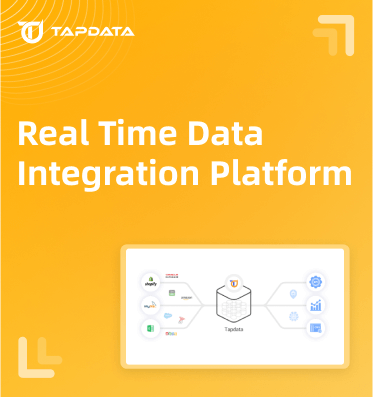
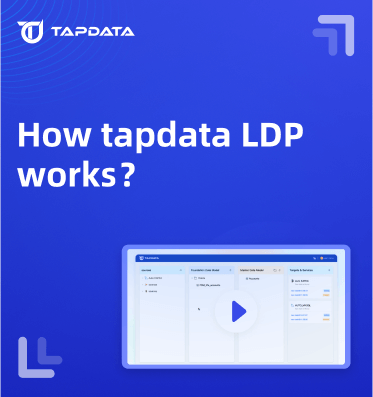

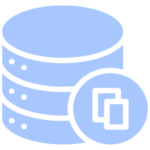


















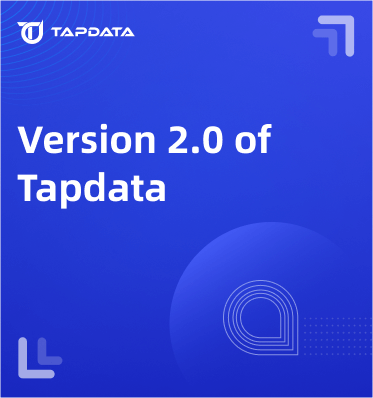
 Blogs
Blogs
 Technical Analysis
Technical Analysis
 Application Scenario
Application Scenario
 Best Practices
Best Practices
 News information
News information
 Quick Start Video
Quick Start Video
 Live playback
Live playback
 Product Demo
Product Demo
 Quick Get Start
Quick Get Start
 Preparation
Preparation
 User Guide
User Guide
 Common Problem
Common Problem




